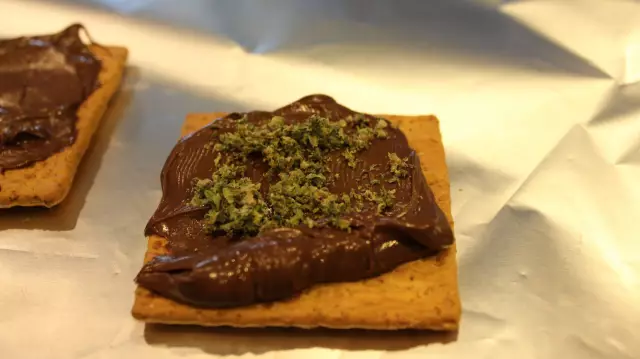- Author Rachel Wainwright [email protected].
- Public 2023-12-15 07:39.
- Last modified 2025-11-02 20:14.
10 healing novelties in domestic gardens
Treatment of diseases and strengthening the body's defenses with the help of medicinal plants is one of the most ancient and effective areas of medicine. Most of the medicinal herbs sold in pharmacies are not wild plants. As a rule, they are grown in specialized farms. This is not only profitable economically, but also justified from the point of view of safety: there are not so many ecologically clean places left on Earth where you can collect wild-growing gifts of nature.
There are a large number of seeds and seedlings of various medicinal plants on sale, and an inquisitive gardener can plant them on his site. The range of this kind of planting material is expanding every year. We want to acquaint the reader with a number of useful exotic plants that have the right to take their rightful place in your garden.
Momordica
Liana is native to Southeast Asia, belongs to the pumpkin family. In middle latitudes, it can be cultivated as an annual garden plant. Momordica is easy to grow from seeds in a seedling way: it quickly gains leaf mass, and the fruits, similar to elongated melons, are quite capable of ripening in three summer months.
All parts of the plant have been used since ancient times in oriental cooking and medicine. Infusion of leaves soothes cough, lowers blood pressure, reduces pain. Decoctions of leaves and stems help increase insulin production. The seeds are rich in substances that help to strengthen the immune system and optimize blood composition. The pulp of the fruit is considered one of the most active anti-cancer agents. In addition, it helps fight depression, and as an external agent is used to treat boils and heal the skin after burns.
In India and China, it is believed that people who regularly eat momordica pulp and seeds rarely get sick and age more slowly. At the same time, the fruits of Momordica are not recommended for expectant mothers: some biologically active components of this product can provoke an increase in the tone of the uterus.

Source: depositphotos.com
Melotria
Tubers and fruits of melotria are great for inclusion in the diet of people who dream of losing weight. These products are useful for patients with a tendency to constipation and arterial hypertension. The high iodine content makes melotria a good addition to the menu of patients suffering from thyroid pathologies.
An increased acidity of gastric juice is considered a contraindication to the use of mouse melon, since there are many organic acids in the fruits and tubers of the plant.
Tladiant
In oriental medicine, all parts of the plant are used. A decoction is made from the tubers, which is considered a strong diuretic and choleretic agent. Infusion of tubers is used for dysmenorrhea and insufficient lactation. Tincture of fruits, seeds and herbs helps relieve headaches. Decoction of seeds has antiscorbutic, astringent and expectorant effects. Infusion of flowers can relieve flu symptoms.
Pepino
Pepino is a short perennial shrub belonging to the nightshade family. This is a thermophilic crop, and in the middle lane it is grown outdoors only in summer. In the fall, the bushes are transplanted into pots and stored indoors until spring. Some people cultivate pepino as a houseplant.
Pepino fruits are medium-sized, fragrant, heart-shaped berries. When ripening, they become creamy with lilac vertical stripes. The fruit tastes like melon and pear.
Berries are rich in iodine, iron, potassium, vitamins, pectins and natural sugars. There are few organic acids in them, which makes pepino a very valuable product for patients suffering from pathologies of the digestive tract. In places of natural growth (mountainous regions of South America), the fruits are traditionally used to treat diseases of the thyroid gland, respiratory tract infections, problems with the cardiovascular system, rheumatism and skin lesions. There is evidence that the surface layer of berries is rich in anthocyanins, which have a high anti-cancer activity.
Vigna
A variety of asparagus beans with very long edible fruits (some pods reach a length of 65-70 cm). The advantages of the plant are unpretentiousness, ease of cultivation and extremely high yield.
Like all legumes, cowpea is very beneficial for diabetes and obesity. It is rich in vegetable protein, which is no less nutritious than the protein found in chicken meat. Preparations made from its beans are used to treat pathologies of the kidneys, liver and pancreas. The leaves of the pods contain arginine, which normalizes blood glucose levels. Tea made from dry beans is recommended to drink for heart pathologies, and infusion of flowers - for kidney stones.
Magonia
A small shrub of the barberry family, unpretentious and quite suitable for growing in the middle lane. Mahonia berries are edible: they are used raw and dried, as well as for making jams, juices and purees.
All parts of the plant contain alkaloids, mainly berberine. Berries are rich in vitamins and trace elements (sodium, zinc, manganese and copper). Mahonia rhizome extract is considered an effective general tonic. It is also used in the treatment of liver and biliary tract pathologies, hemorrhoids, constipation, irritable bowel syndrome, cholecystitis, and dysbiosis. The berries are also used as an external remedy - to treat eczema, skin rashes and even psoriasis.
Due to the high content of alkaloids, Mahonia preparations should be taken strictly according to the dosage prescribed by the doctor. They should not be given to nursing mothers and pregnant women.
Dioscorea
A perennial vine growing in Abkhazia and Krasnodar Territory. The site can be cultivated as an ornamental crop. For medicinal purposes, dioscorea rhizomes are used, which are rich in saponins. Powders and tinctures (water or alcohol) are prepared from plant materials.
Dioscorea preparations have general tonic, hypotensive, immunomodulatory, choleretic, diuretic, vasodilating and sedative properties. In addition, they activate the work of the endocrine glands that produce sex hormones.
Dioscorea is used in the treatment of diseases of the heart and blood vessels, the digestive tract, malfunctions of the immune system, inflammation of the trigeminal nerve, rheumatoid arthritis, inflammatory eye diseases, sleep disorders, gout, skin pathologies and many others. Tinctures of rhizomes help relieve spasms and pains of various origins, improve mood and memory, and accelerate the recovery of patients who have suffered a stroke or myocardial infarction.
When starting taking dioscorea medications, you need to consult your doctor. The plant contains such powerful ingredients that if the dosage is not observed, it can be harmful to health. Dioscorea extracts should not be taken during pregnancy.
Loch narrow-leaved
A small tree (or shrub) with beautiful silvery leaves. It belongs to one of the species of the Loch family, the most famous representative of which is the goji tree. The berries of the narrow-leaved sucker, like its other counterparts, have healing properties: the broth has a beneficial effect on the condition of patients suffering from pathologies of the stomach and intestines. In addition, the infusion of sucker flowers helps with hypertension, the juice squeezed out of the leaves, relieves purulent inflammation and promotes wound healing, and a decoction of dry leaves and bark cures stomatitis and gingivitis.
Paulownia
Paulownia (Adam's tree) is an indigenous inhabitant of the Far East and the countries of Southeast Asia. Despite the fact that the plant is better adapted for humid and warm climates, in the middle lane it can be cultivated like a shrub: in severe frosts, the branches usually freeze slightly, but the roots do not die.
In oriental medicine, paulownia leaves are widely used. Preparations made from them cure pathologies of the liver, gallbladder and kidneys, have a beneficial effect on the condition of the lungs and bronchi. Honey from the flowers of the Adam's tree is especially appreciated. It is used in the treatment of bronchitis, as well as diseases of the digestive system.

Source: depositphotos.com
Locust
Robinia is often called white acacia, although it has nothing to do with real acacia. This is a southern tree, which usually grows as a shrub in mid-latitudes. In medicine, young shoots, bark, leaves and flowers of robinia are used. All parts of the plant contain alkaloids, tannins, glycosides, essential oils and vitamins. Preparations made from such plant materials are used to treat:
- flu and ARVI - as an antipyretic and expectorant;
- diseases of the kidneys and urinary tract - to reduce the inflammatory process and increase urine output;
- malfunctions of the digestive tract. Decoctions of leaves and bark reduce the acidity of gastric juice, have an astringent, antispasmodic and hemostatic effect;
- diseases of the female reproductive system (with uterine fibroids and inflammatory processes);
- hypertension;
- thrombophlebitis and rheumatic joint pain - as an external remedy.
Robinia preparations should be used with caution, as the alkaloids they contain can cause intoxication.
Gardeners should inquire about seeds and seedlings new to the Russian market. After all, you can plant plants on your site that can not only provide a pleasant addition to the diet, but also help in the treatment of many ailments. But remember: an individual intolerance is a contraindication to the use of any medicinal plants.
YouTube video related to the article:

Maria Kulkes Medical journalist About the author
Education: First Moscow State Medical University named after I. M. Sechenov, specialty "General Medicine".
Found a mistake in the text? Select it and press Ctrl + Enter.






